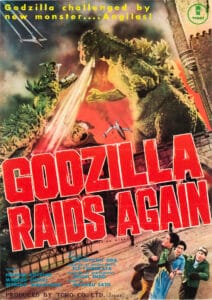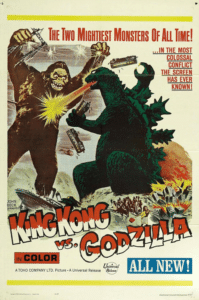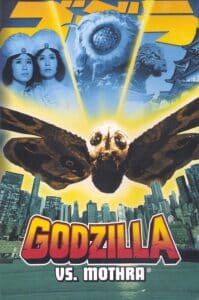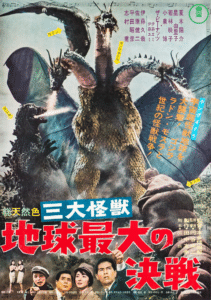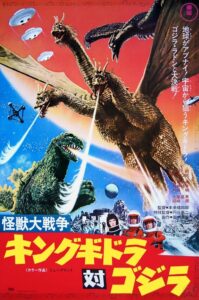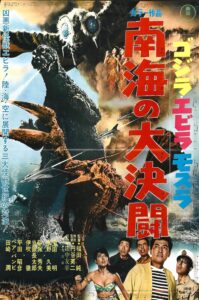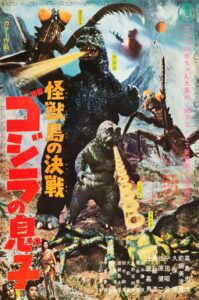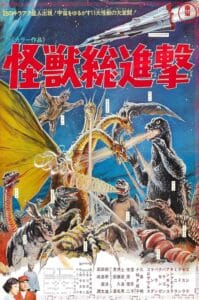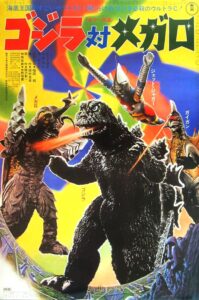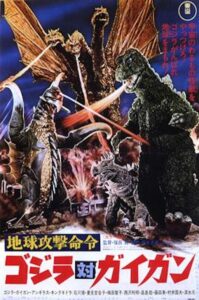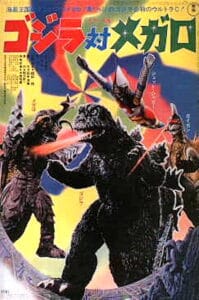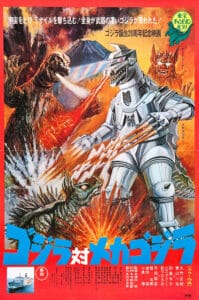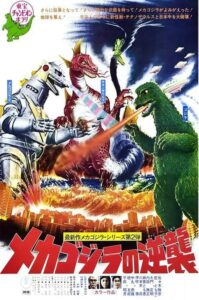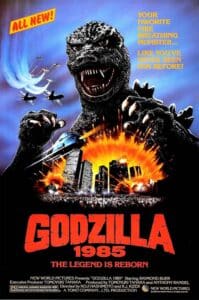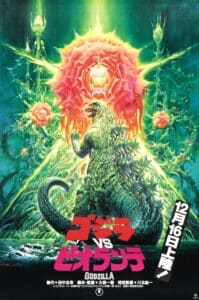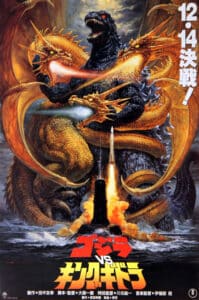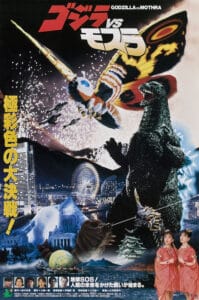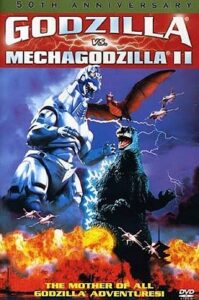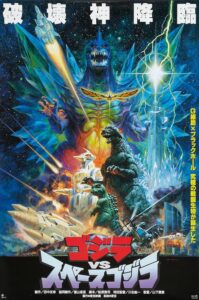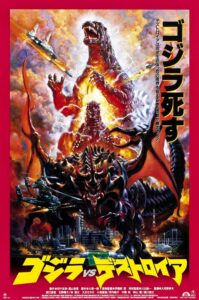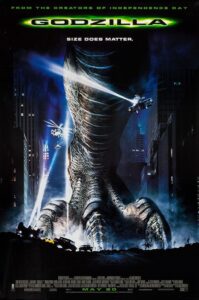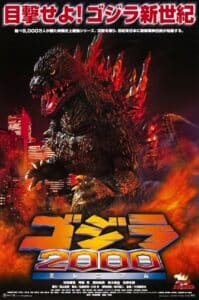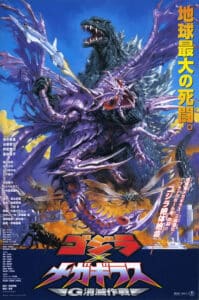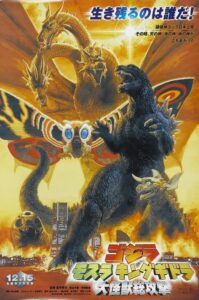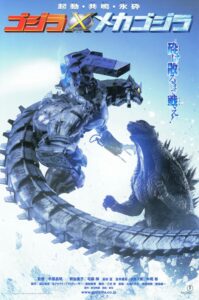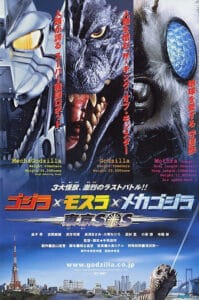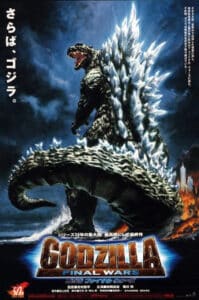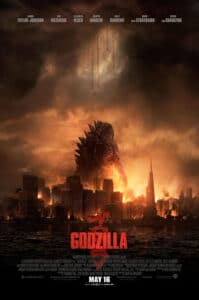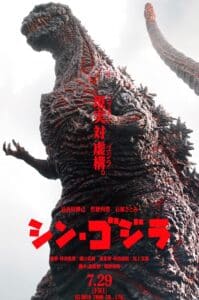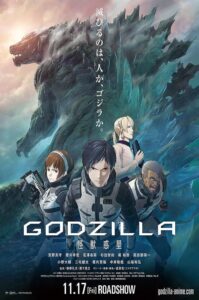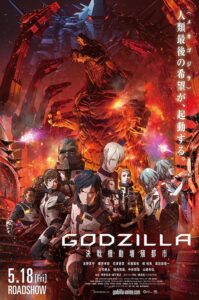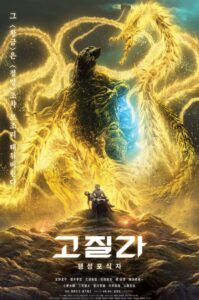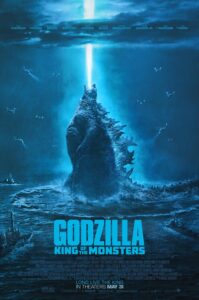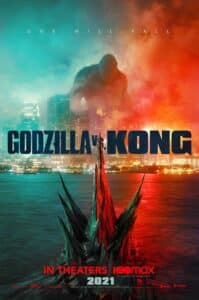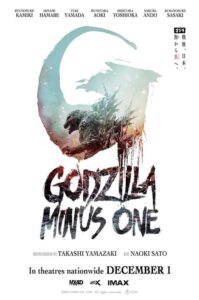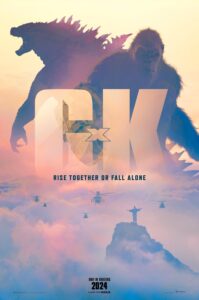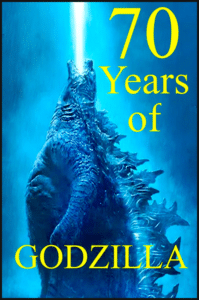
by Rob DeMarco | Read by Adam Scull
In the pantheon of cinematic monsters, Godzilla reigns supreme as the world’s favorite, a title earned through a rich tapestry of symbolism, cultural impact, and an uncanny ability to adapt and resonate across generations.
The story and impact of Godzilla, from its origins as a metaphor for the destructive power of nuclear weapons to its evolution as a multifaceted character, global cultural resonance, and enduring influence on popular culture and filmmaking.
Godzilla’s symbolic representation has evolved to encompass the trauma and anxieties of the Japanese people after World War II, with the monster originating as a metaphor for the negative impact of nuclear weapons in the 1950s. The devastating effects of the atomic bomb in Hiroshima and Nagasaki are encapsulated in Godzilla, serving as a stark reminder of the potential for mass destruction and the demolition of humanity if nuclear weapons are ever unleashed again. The monstrous creature embodies the consequences of atomic warfare, providing a poignant reflection of the profound fears and realities faced by the Japanese population during that era. This symbolic representation highlights Godzilla’s deep-rooted historical and cultural significance as a powerful allegory for the perils of nuclear devastation.
Godzilla’s portrayal as a destructive force reflects the palpable anxieties and traumas experienced by the Japanese people. It serves as a poignant reminder of the catastrophic impact of nuclear weapons, resonating with the collective consciousness of a nation deeply affected by the aftermath of World War II. The monster’s symbolic representation in Japanese culture and history not only signifies the devastation caused by past nuclear events but also serves as a cautionary tale for the future, emphasizing the enduring relevance of Godzilla as a powerful symbol of the enduring impact of nuclear warfare.
Godzilla’s symbolic representation as a metaphor for the negative impact of nuclear weapons in the 1950s and reflecting the devastation of the atomic bomb in Hiroshima and Nagasaki has contributed to its global influence and cultural resonance. The monster’s emergence as an allegory for the potential for mass destruction and the wipeout of humanity if nuclear weapons are used again has resonated with audiences worldwide, making Godzilla more than just a cinematic character but a symbol of global significance.
The evolution of Godzilla to represent Japanese pop culture as a whole has contributed to its global appeal. Godzilla’s iconic status and recognition worldwide have made the character a symbol of Japanese cinema and creativity. The monster’s ability to adapt to different societal and cultural contexts while maintaining its core symbolism of nuclear devastation has solidified its place in global popular culture, showcasing its enduring influence and cultural resonance. As long as nuclear weapons or nuclear power exist, Godzilla will continue to be relevant globally, emphasizing its significance in global cinema and popular culture.
The resurgence of Godzilla as a beloved and respected cultural icon can be attributed to several significant milestones, reflecting the enduring impact and influence of the iconic monster. One pivotal moment in Godzilla’s resurgence is the release of “The Return of Godzilla” in 1984, which marked a transformative era of darker and more earnest films in the franchise. This film revitalized the character and reinvigorated the audience’s fascination with Godzilla, paving the way for the monster’s popularity today. The success of “The Return of Godzilla” not only breathed new life into the franchise but also solidified Godzilla’s status as a cultural phenomenon, capturing the imagination of audiences worldwide.
Godzilla’s symbolic representation as a metaphor for the negative impact of nuclear weapons in the 1950s and its reflection of the devastation of the atomic bomb in Hiroshima and Nagasaki exemplifies the profound historical and cultural significance of the iconic monster. By signifying the potential for mass destruction and the wipeout of humanity if nuclear weapons are used again, Godzilla serves as a poignant reminder of the catastrophic consequences of atomic warfare. Furthermore, the monster was intended as a strong political statement, representative of the traumas and anxieties of the Japanese people after World War II, making its symbolism deeply rooted in historical and social contexts.
The evolution of Godzilla from a mere symbol of nuclear destruction to a multifaceted character reflects the monster’s resilience and adaptability. This transformation is evident in the varied portrayals of Godzilla as a destroyer, protector, and anti-hero, showcasing the complexity and depth of the character across different iterations and films. For instance, in the 2016 film “Shin Godzilla,” the monster’s portrayal captures the essence of a force of nature, embodying both terror and sympathy as it wreaks havoc on Japan, showcasing the character’s multifaceted nature and ability to convey diverse messages. Godzilla’s enduring legacy and impact on popular culture and filmmaking are epitomized by the monster’s transcending boundaries and resonating with audiences worldwide, breaking cultural barriers and captivating the imagination of people from different backgrounds.
70 Years of Godzilla
1. Godzilla (1954)
American nuclear weapons testing results in the creation of a seemingly unstoppable dinosaur-like beast.
2. Godzilla Raids Again (1955)
Scout pilots for a fishing fleet are startled to discover a new monster named Anguirus alongside a second Godzilla. The monsters make their way toward Osaka as Japan can only brace for tragedy and relive the horror of Godzilla once more.
3. Â King Cong vs. Godzilla
A UN reporter broadcasts a report on the appearance of a prehistoric monster that emerges from hibernation while a pharmaceutical company seeks publicity with its monster. (US Version).
4. Mothra vs. Godzilla (1964)
Mothra’s egg washes ashore and is claimed by greedy entrepreneurs who refuse to return it to her fairies. As Godzilla arises near Nagoya, the people of Infant Island must decide if they will answer Japan’s pleas for help.
5. Ghidorah, the Three–Headed Monster (1964)
 A detective is assigned to protect a princess who prophesies the Earth’s end with the arrival of a mighty space monster. Mothra and her fairies must persuade Godzilla and Rodan to set aside their differences or face the invader alone.
6. Invasion of Astro-Monster (1965)
Astronauts investigate Planet X and encounter the Xiliens, who ask Earth’s people to help save their world from “Monster Zero.†As one astronaut forms a romance with a mysterious woman, he uncovers the Xilien’s true intentions.
7. Ebirah, Horror of the Deep (1966)
 A young man searching for his brother steals a boat that shipwrecks on Letchi island, where terrorists have enslaved the Infant Island natives. Discovering Godzilla asleep, he and others decide to awaken him to liberate the natives.
8. Son of Godzilla (1967)
 A reporter stumbles upon weather experiments on a tropical island, discovering giant mantids, a cast-away woman, and an infant monster that Godzilla must adapt and learn to raise as one of his own
]
9. Destroy All Monsters (1968)
 At the end of the 20th century, all Earth’s monsters were safely rounded up and sent to Monsterland for scientific study. Chaos erupts when a race of she-aliens known as the Kilaaks unleashes the monsters on the world.
]
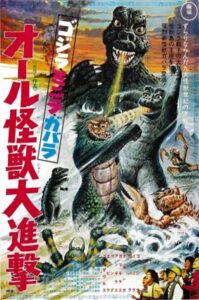
 A latchkey child living in the industrial city of Kawasaki confronts his loneliness through his escapist dreams of Monster Island and friendship with Minilla.
11. Godzilla vs. Hedorah (1971)
 An ever-evolving alien life form from the Dark Gaseous Nebula arrives to consume rampant pollution. Spewing mists of sulfuric acid and corrosive sludge, neither humanity nor Godzilla may be able to defeat this toxic menace.
12. Godzilla vs. Gigan (1972)
  A manga artist becomes suspicious of his employers when a garbled message is discovered on tape. Godzilla and Anguirus set out to help defeat the invaders, and he formed a team to investigate.
13. Godzilla vs. Megalon (1973)
  An inventor creates a humanoid robot named Jet Jaguar that is seized by the undersea nation of Seatopia. Using Jet Jaguar as a guide, the Seatopians send Megalon as vengeance for the nuclear tests that have devastated their society.
14. Godzilla vs. Mechagodzilla (1974)
 An Okinawan prophecy appears to foretell Earth’s destruction at the hands of Godzilla, only for the true Godzilla to reveal his counterpart as a mechanical alien weapon.
15. Terror of Mechagodzilla (1975)
 Attempts to salvage Mechagodzilla are thwarted, causing an INTERPOL investigation that uncovers the work of a shunned biologist and his daughter, whose lives become entwined with the resurrected machine.
16. Godzilla 1985 (1985)
 Thirty years after the original monster’s rampage, a new Godzilla attacks Japan.
17. Godzilla vs. Biollante (1989)
 Lonely by the loss of his daughter, a geneticist creates a monstrous new mutation.
18. Godzilla vs. King Ghidorah (1991)
 Time travelers use Godzilla to destroy Japan to prevent the country’s future economic reign.
19. Godzilla and Mothra: The Battle for Earth (1992)
 Japan is in a three-way battle between Godzilla, the divine Mothra, and her dark counterpart, Battra.
20. Godzilla vs. Mechagodzilla II (1993)
 The United Nations assembles the ultimate weapon to defeat Godzilla, while scientists discover a fresh pteranodon egg on a remote Japanese island.
21. Godzilla vs. SpaceGodzilla (1994)
 Godzilla is threatened by two new forces: Mogera – another UN-built machine, and Space Godzilla – a beast spawned from Godzilla’s particles in space.
22. Godzilla vs. Destoroyah (1995)
 The aftermath of the Oxygen Destroyer brings Destoroyah, a beast intent on killing Godzilla, who is on the verge of a nuclear meltdown.
23. Godzilla (I) (1998)
 French nuclear tests irradiate an iguana into a giant monster that heads off to New York City. The American military must chase the beast across the city to stop it before it reproduces.
24. Godzilla 2000: Millennium (1999)
  An independent group of researchers actively track Godzilla as a giant meteor is discovered. The mysterious rock begins to levitate as its true intentions for the world and Godzilla are revealed.
25. Godzilla vs. Megaguirus (2000)
 Japan created an artificial black hole device to trap Godzilla forever. Still, a test of the device created new foes for Godzilla: car-sized dragonflies called meganula and their queen, Megaguirus.
26. Godzilla, Mothra and King Ghidorah: Giant Monsters All-Out Attack (2001)
 A reporter notorious for working on pseudo-documentaries must uncover the legend of the three guardian monsters who must rise to defend Japan from the vengeful spirits within Godzilla.
27. Godzilla Against MechaGodzilla (2002)
 A new Godzilla causes the JSDF to construct a cyborg countermeasure from the original monster’s remains. The beast’s restless soul is discovered to inhabit the machine as the pilot must learn to find value in her life.
28. Godzilla: Tokyo S.O.S. (2003)
Mothra and her fairies return to Japan to warn humanity that they must return Kiryu to the sea, for the dead must not be disturbed. However, Godzilla has survived to menace Japan, leaving Kiryu as the nation’s only defense.
‘
’29. Godzilla: Final Wars (2004)
 Godzilla’s fiftieth Anniversary project, in which Godzilla travels around the world to fight his old foes and his allies, plus a new, mysterious monster named Monster X.
30. Godzilla (2014)
 The appearance of monstrous creatures besets the world, but one of them may be the only one who can save humanity.
31. Shin Godzilla (2016)
 Japan is plunged into chaos upon the appearance of a giant monster.
32. Godzilla: Planet of the Monsters (2017)
 A desperate group of refugees attempts to recolonize Earth 20,000 years after Godzilla took over, but one young man wants revenge above all else.
33. Godzilla: City on the Edge of Battle (2018)
 Humanity’s desperate battle to reclaim the Earth from Godzilla continues. The key to defeating the King of the Monsters may be Mechagodzilla, a robotic weapon thought to have been lost nearly 20,000 years ago.
34. Godzilla: The Planet Eater (2018)
 Humanity, their alien allies, and Godzilla all enter their endgame as the powerful destructive entity known as Ghidorah arrives on Earth.
35. Godzilla: King of the Monsters (2019)
 The crypto-zoological agency Monarch faces off against a battery of god-sized monsters, including the mighty Godzilla, who collides with Mothra, Rodan, and his ultimate nemesis, the three-headed King Ghidorah.
36. Godzilla vs. Kong (2021)
 The next chapter in the cinematic Monsterverse pits two of the greatest icons in motion picture history against each other–the fearsome Godzilla and the mighty Kong–with humanity caught in the balance.
37. Godzilla Minus One (2023)
 Post-war Japan is at its lowest point when a new crisis emerges in the form of a giant monster baptized in the horrific power of the atomic bomb.
38. Godzilla x Kong: The New Empire (2024)
Two ancient titans, Godzilla and Kong, clash in an epic battle as humans unravel their intertwined origins and connection to Skull Island’s mysteries.



